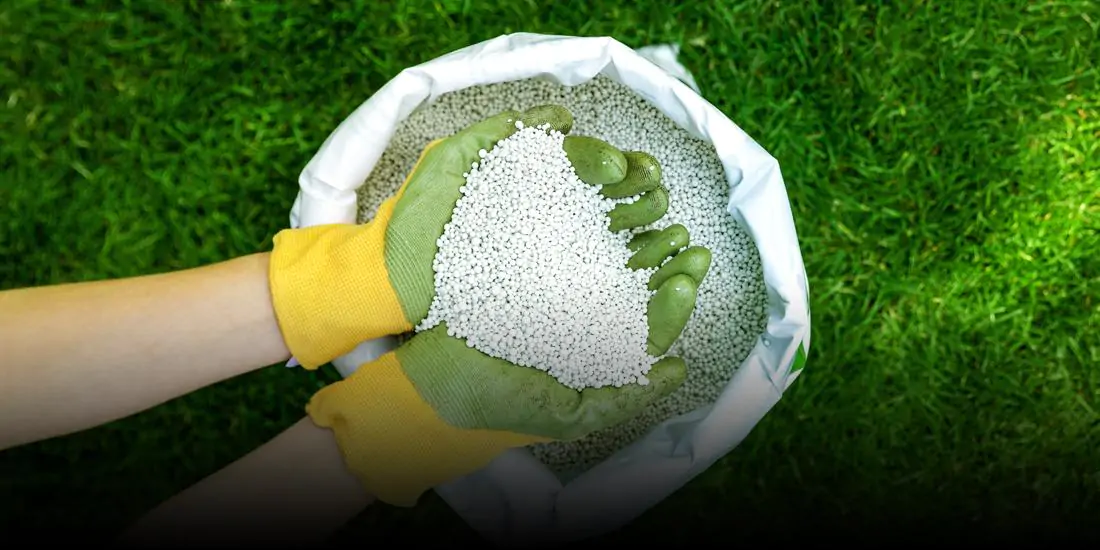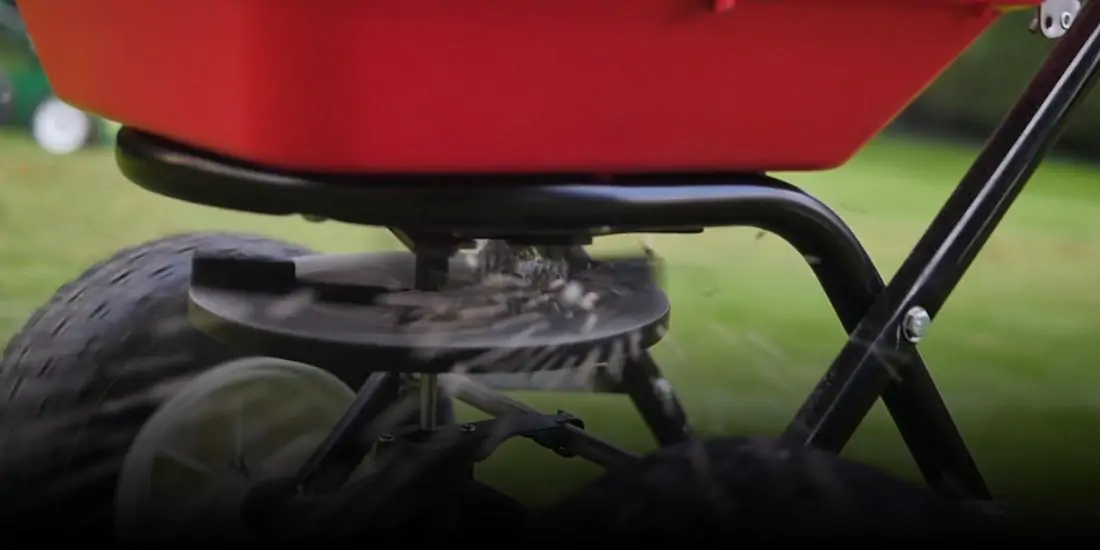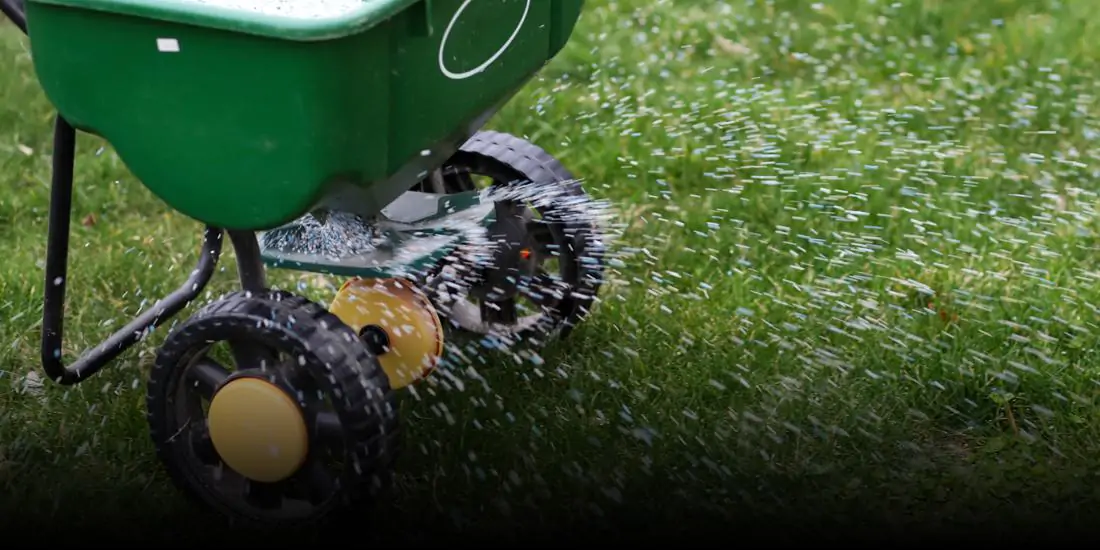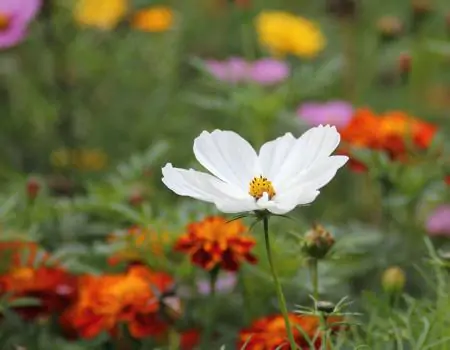Fertiliser FAQs
Find out how to apply and when to apply our seasonal fertilisers alongside best practice tips!


How to use fertiliser
Find out how to use fertiliser effectively and correctly for the best results


What fertiliser should I use?
Choose the right fertiliser for your needs
Getting Started
- Apply our fertiliser at the recommended rate by hand when wearing a glove or by using a spreader
- Water granular fertiliser in until it dissolves
- Spread liquid fertilisers steadily and evenly across the surface
- Keep kids and pets away from the lawn during application and until the granules dissolve
- Remove / water off any footwear you were wearing during the application of the fertiliser to avoid any risk of damage to newly laid patios/stone flag flooring
When sowing a new lawn from scratch, we recommend using our QUICK RELEASE: Pre-Seed fertiliser. When your lawn is established at the six week mark, or if you have an already established lawn, you should aim for two slow release fertiliser applications in a year. This means applying SLOW RELEASE: Autumn / Winter from September onwards, and SLOW RELEASE: Spring / Summer from April onwards. Both fertilisers work over the course of four months. If you are looking for faster results or have left fertilising late in the season, you can use our quick release versions of both of these fertilisers.
If your lawn is established, suffering from weeds or moss and is 6 months + old, you can use our Feed, Weed and Moss Killer.
If you want to keep your lawn healthy but want to use an organic product that can be used for most of the year, we recommend our REVIVE: Organic 365.
You can apply fertiliser before or after seeding. You can do this with the majority of our fertilisers with the exception of two. Our QUICK RELEASE: Pre-Seed and Feed, Weed and Moss Killer should both be used prior to seeding.
Before Seeding
You can apply fertiliser before seeding, and you can seed areas once the fertiliser granules have dissolved. If applying our Feed, Weed and Moss Killer you must wait 2 weeks for it to take effect before seeding.
After Seeding
6 weeks after seeding when your new grass is hitting blade heights of 5-7cm and has had its first mow, you can fertilise your lawn - ensuring to water it in until dissolved.
| Fertiliser | Recommended Application Rate |
| QUICK RELEASE: Pre-Seed | 70g per m2 |
| QUICK RELEASE: Autumn / Winter | 70g per m2 |
| QUICK RELEASE: Spring / Summer | 70g per m2 |
| SLOW RELEASE: Autumn / Winter | 35g per m2 |
| SLOW RELEASE: Spring / Summer | 35g per m2 |
| REVIVE: Organic 365 | 70g per m2 |
| Feed, Weed and Moss Killer | 32g per m2 |
The three nutrients that any lawn needs are Nitrogen, Phosphate and Potassium – also known as the acronym NPK (each letter represents the nutrient element initial). These nutrients all serve varying purposes and, when combined to make a compound fertiliser – are very useful indeed.
Nitrogen(N) gives the lawn its lush green colour by stimulating leaf growth and helping to establish the lawn.
Phosphate (P)is known for building up the root system and improving seed-to-soil contact.
Potassium (K) can help to harden grass so that it builds up an immunity/tolerance to disease and drought.
The goal of our spring/summer fertilisers is to make grass grow green and establish the lawn quickly - and this is evident in their NPK breakdown. An example of the NPK level of our QUICK RELEASE: Spring / Summer is 9.7.7. This shows that the concentration of Nitrogen is slightly higher than the Phosphate and Potassium, encouraging fast growth of greener grass with the added extras of a strengthened root system and protection against drought. As there isn’t much difference between the levels of each nutrient – you could consider this fertiliser as a bit of an ‘all-rounder’ to kick start the spring season.
An example of a slightly different NPK level to this would be our SLOW RELEASE: Spring / Summer fertiliser which has an NPK of 12.6.6. You can tell that the concentrate of Nitrogen is double that of the Phosphate and Potassium concentrate, meaning that it will help your grass grow greener and stimulate leaf growth over a longer period of time in comparison to our Quick Release, but will also slowly build up your lawns root system and tolerance
Fertiliser is not required for our seed to germinate, but it can accelerate germination as well as giving your lawn the very best foundation for growth. In addition, when your lawn is established it can benefit from better soil composition, meaning roots get access to nutrients faster and easier. A stronger soil structure reduces the chances of heavy compaction improving drainage and in turn preventing waterlogging. Other benefits of these added nutrients help to prevent disease, fungi and yellowing. These effects aren’t just felt for one season either, if maintained these can be long-term benefits making your lawn even healthier over time.
Maintenance
At a minimum, we recommend two fertiliser applications per year to maintain a healthy lawn. This means a SLOW RELEASE: Autumn / Winter application from September onwards (over 4 months) to keep your lawn healthy during winter to protect it from frost and winter borne disease, and a SLOW RELEASE: Spring / Summer application from April onwards (over 4 months) to make grass green and protect from extreme heat and drought during summer. Your lawn is dormant (grass growth stalls) in December and January, and typically resumes slow growth in February - you do not need to fertilise during these times. In the months where your lawn is not covered by a slow release feed, you can top it up with a seasonal quick release fertiliser.
You should let your fertiliser take full effect in accordance with the duration of feed it provides. E.g. Our slow release fertilisers provide 14-16 weeks of feed, our quick release fertilisers provide six weeks of feed, our Feed, Weed and Moss Killer works over two weeks and our REVIVE: Organic 365 fertiliser provides 16- 20 weeks worth of feed - so do not fertilise again within this time. Once the feed duration is up, you can feed your lawn again.
If you have applied any type of fertiliser to your lawn prior to sowing, make sure to wait the allotted time (the instructions will suggest a waiting period) before applying any more fertiliser. You can apply our fertilisers when the lawn is 6-8 weeks old, and has had its first mow. Apply just before rain is due. Avoid application during very hot periods.
Avoid applying a Feed, Weed and Moss Killer product until the lawn is at least 6 months old – you can find out more about weed control in a newly seeded lawn here. Mowing the lawn prior to applying fertiliser will help you see where you are spreading the product. Make sure to water any fertiliser in, as it will scorch the blades if not dissolved.
You can apply our Feed, Weed and Moss Killer to your lawn when it is established and is 6 months + old. You can apply it from May - August. Make sure to water the fertiliser in and allow it to work over two weeks. We recommend using this on your whole lawn instead of using it as a spot treatment.
About Our Fertilisers
All of our fertilisers contain chemicals. Keep children and pets off the lawn during application and until the granules dissolve. If your pet uses the lawn as a bathroom then supervise them when they are doing this. Once the granules are dissolved, it is safe to let kids and pets back on the lawn.
Our fertiliser will keep for up to four years if stored in a dry place.
Our REVIVE: Organic 365 fertiliser is made up of 100% organic matter. It can be applied on your lawn throughout the year, but we recommend avoiding doing this in December and January, as your lawn is dormant. Apply at a rate of 70g per m2, and water to activate.
You should water your fertiliser in until it dissolves. Aim to fertilise on a day when you are expecting a good amount of rain so it does the job for you - otherwise just water it in yourself using a hose/sprinkler system.
The short excerpt for the page to show on search results.


